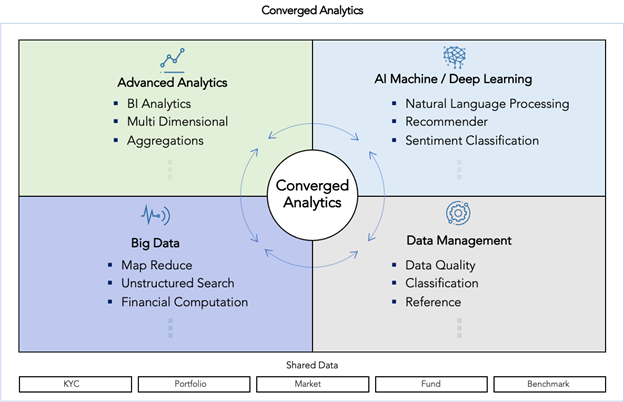The Future of Data-Driven Product Innovation


Financial products are no longer characterized by the steps of filling out a form, waiting for a credit decision and, if successful, watching the monthly payments leaving your account.
Although we have had a big focus on user experience and developing products that provide a streamlined user journey, it could be argued that we are only scratching the surface: These developments have largely been an exercise in layering a front end on top of an often fragmented set of underlying data and transactional systems.
Modern digital data-driven products have many facets, but at a high level they can be viewed as a composition of data, advanced algorithms, and real-time transactional systems that can be used to enable:
There are significant barriers to most large financial services organizations being able to create advanced digital products and services, as underlying transactional platforms and data are usually fragmented and run independently of each other. These challenges are compounded by the fact that advanced analytics and learning algorithms are central to enabling these new product capabilities and require access to large amounts of transactional and nontransactional data as well as computation to develop and operate.
By adopting a converged analytics strategy, organizations can create a foundation for building next-generation digital products by providing a coherent framework, integrated datasets and advanced processing environments.

Legend: KYC = Know Your Customer
A converged platform allows for very fast product development and agility by providing a number of key foundational capabilities:
Converged analytics can be used to underpin advanced digital products. To illustrate the approach, we would like to highlight how data in conjunction with a number of advanced algorithms can be used to create a best-in-class digital product for the wealth management segment.

Historically, wealth and investment advice has been a high-touch personalized service. However, the demand for wealth management products has risen and the needs of customers have changed over time. They now want a real-time view of their investments and access to advisory services on their mobile devices or as part of a structured dialog: They expect that an intelligent agent can walk them through the complex investment process and answer their questions interactively. A seamless user experience can be provided to customers by using a number of advanced data analytics and machine learning methods. These approaches interact with the customer and investment algorithms, creating products that are highly automated.
Financial services organizations that do not embrace converged analytics to drive product and service innovation will struggle to compete against other fast-moving competitors. These contenders are using data and advanced algorithms to create new leading-edge products and changing the competitive landscape as they do so.

Thomas is a multidisciplinary technologist with an eye for business model innovation and leading-edge data technologies. He has +20 years' experience in financial services with Booz & Co, PwC, a VC-backed FinTech, and global banks including JP Morgan, Deutsche Bank and Citi.